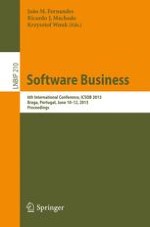This book contains the refereed proceedings of the 6th International Conference on Software Business, ICSOB 2015, held in Braga, Portugal, in June 2015. The theme of the event was "Enterprising Cities" focusing on a noticeable spillover of software within other industries enabling new business models: Companies bundle their physical products and software services into solutions and start to sell independent software products in addition to physical products.
The 16 full, five short, and three doctoral symposium papers accepted for ICSOB were selected from 42 submissions. The papers span a wide range of issues related to contemporary software business—from strategic aspects that include external reuse, ecosystem participation, and acquisitions to operational challenges associated with running software business.
